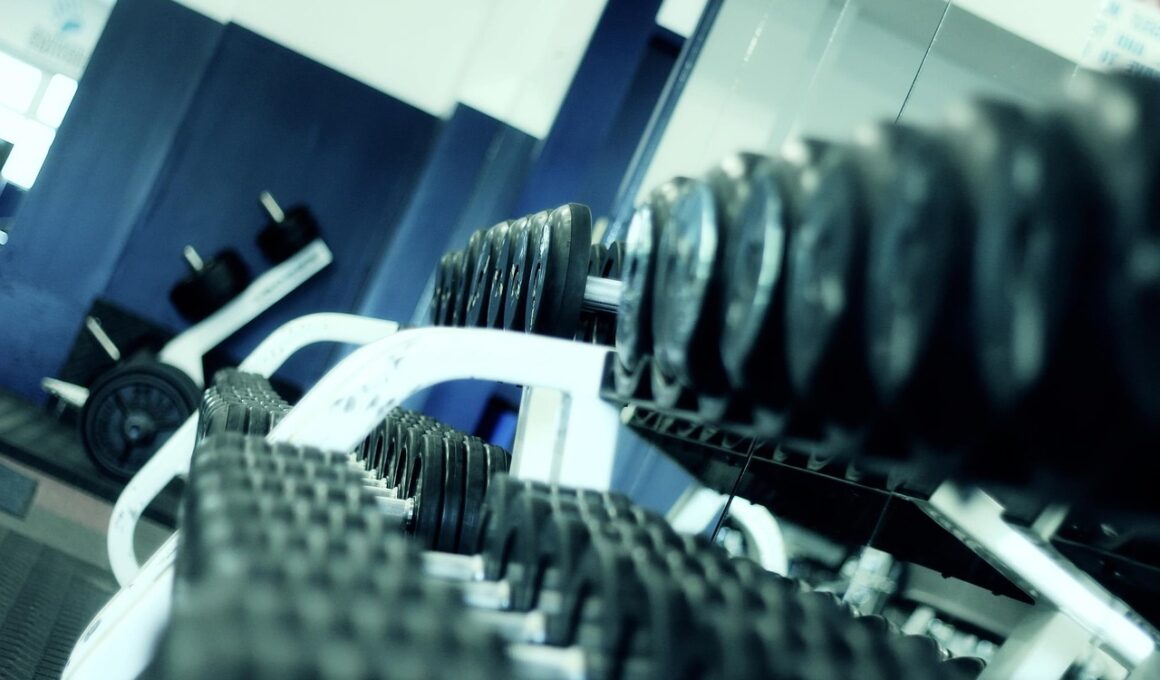Exploring Weighted Calisthenics: When to Start and How to Progress
Weighted calisthenics offers a unique blend of strength and agility training. Many practitioners ask when should they introduce weights into their bodyweight routines. Generally, it is advisable to have a solid foundation of standard calisthenics movements before integrating weights. Completing exercises like push-ups, pull-ups, and squats without weights should be the starting point. This ensures the body is accustomed to the movements, thereby reducing the risk of injury. Once the basic forms are mastered, beginners can consider weight integration, which adds a new dimension to training. A common approach starts with light weights to gradually build strength. Exercises can be enhanced by using weight vests, ankle weights, or plates. It is crucial to maintain proper form while adding weight, as technique is paramount for effective training. Moreover, slowly increasing weights as strength improves will help in overcoming plateaus. Many athletes enjoy the challenge that comes with weighted variations, making workouts more engaging and dynamic. Always listen to your body and allow adequate recovery between sessions, as weighted calisthenics can be taxing on the muscles, leading to fatigue if not managed correctly.
Before committing to weighted calisthenics, assessing your current fitness level and goals is vital. A deep understanding of where you are starting from helps in mapping out a training strategy that aligns with your aspirations. For some, building pure strength may be the focus, while others might aim for increased endurance or muscle hypertrophy. Each objective requires a different approach regarding weights and reps. Additionally, consider the types of exercises you enjoy doing most; incorporating something you love can vastly improve consistency. Engaging in a varied routine can keep motivation high and prevent burnout. The incorporation of weights should feel rewarding rather than overwhelming. Establishing a realistic timeline for progression can also help manage expectations and results. Listen to feedback from your body as you experiment with weights, adjusting your strategy based on comfort and pain thresholds. Remember that progress in weighted calisthenics, like in any fitness domain, is not linear. Celebrating small milestones builds confidence and fuels the journey. Furthermore, keeping a training log to track progress in weights, reps, and personal feelings can provide insight into what works best for you.
Common Exercises in Weighted Calisthenics
Weighted calisthenics encompasses a broad spectrum of exercises that cater to various muscle groups. Some of the most effective exercises include weighted push-ups, pull-ups, dips, and squats. Implementing these movements with added weights not only enhances strength but can also build muscle definition. For instance, weighted push-ups require placing a backpack filled with weights on your back or using a weight plate. This modification directly impacts the chest, shoulders, and triceps, leading to heightened muscle engagement. Weighted pull-ups can similarly be performed using a weight belt, increasing the difficulty of a classic strength builder. Dips can be adapted by having a partner hold ankles or using a dip belt. Incorporating weighted squats drastically boosts leg power, vital for overall calisthenics performance. It is important to balance these weighted exercises with adequate recovery, allowing muscles to repair and grow between workouts. As a novice, mastering the unweighted versions ensures safety before progressing into more challenging training. Gradually increasing weight as strength improves will maintain engagement in your workouts and foster continuous improvement over time.
When it comes to programming your weighted calisthenics workouts, an intelligently designed routine is key. Structuring your workout to include integrated approaches of strength, endurance, and flexibility will yield holistic benefits. For example, set aside specific days for weighted training to maximize performance while allowing adequate time for recovery. Alternating these workouts with lighter, high-rep sessions can foster muscular endurance and growth. Incorporating compound movements will also engage multiple muscle groups, promoting functional strength adaptable to everyday movements. It is equally beneficial to mix high-intensive interval training within your routines. This can include short bursts of weighted exercises followed by rest. Such interval training not only boosts strength but adds a cardio element as well. Experimenting with different rep ranges is essential; lower reps with heavier weights build strength, while higher reps with lighter weights enhance endurance. Regularly reflecting on progress and adjusting your workout plan can help facilitate continuous improvement. Incorporate flexibility work into your regimen, focusing on stretching and mobility to support injury prevention over time. Always remember to warm-up before workouts and cool down afterward to promote optimal recovery.
Safety and Injury Prevention
Safety should always be a priority when delving into weighted calisthenics. Understanding the risks associated with improperly executed movements is paramount for any practitioner. Significant injuries can occur from using weights that are beyond your current level, leading to strain or tearing of muscles. Emphasizing technique over quantity is essential; being able to perform a movement correctly without weight is a prerequisite to adding resistance. Always perform warm-up exercises such as dynamic stretches or lower-resistance movements to prepare the muscles before engaging heavier workouts. Incorporating proper cooldown and stretching post-workout helps with recovery and alleviates muscle soreness. If feeling pain outside of regular fatigue, it’s crucial to re-evaluate your workout strategy and consider consulting with a fitness professional. Utilizing recovery techniques like foam rolling, yoga, and adequate hydration can aid in preventing injuries. Additionally, consider having a workout buddy who can assist with spotting during heavier lifts, offering encouragement and safety in your routines. Ultimately, listening to your body and resting when necessary enhances long-term success in calisthenics, particularly as intensity levels increase during workouts.
As you progress into higher levels of weighted calisthenics, advanced techniques can be explored for those desiring new challenges. Exploring movements like one-arm pull-ups or weighted ring dips develops extraordinary strength and coordination. Incorporating these advanced techniques provides not only physical stimulus but venture into the mental aspect of training. For those apprehensive about attempting advanced movements, breaking them down into smaller parts can be advantageous. For example, practicing negative repetitions can help build necessary strength while performing partial movements of the intended goal can foster confidence. Moreover, the incorporation of different angles in exercises enhances muscle development throughout various muscle fibers. Methods such as explosive movements, where you prioritize speed, provide a further challenge and can yield impressive results. Advanced calisthenics is much about progression steered by consistency. Setting realistic goals based on your strengths and weaknesses will streamline your training approach and help achieve desired outcomes faster. Joining calisthenics communities or forums also opens the door to sharing tips, receiving motivation, and forging new friendships that enhance the experience of this rigorous yet rewarding training discipline.
Conclusion: Embracing the Journey
In conclusion, incorporating weighted calisthenics into your training brings numerous benefits, enhancing both strength and skills. Engaging with these advanced techniques can dramatically change your fitness journey and enhance overall performance. As you embark on this journey, remember that consistency and patience pave the road to success. Setting achievable goals that match your current conditioning fosters motivation and helps celebrate progress. Documenting your workouts makes tracking achievements easier, ensuring you stay focused on your aims. Embracing the challenges that come with weighted calisthenics leads to unyielding strength, improved coordination, and a more defined physique. Surrounding yourself with a supportive community can elevate your experience, providing inspiration and assistance. Remain open to evolving within this fitness sphere, as research and techniques continually improve over time. Maintain a mindset of curiosity and adaptability, ensuring that you stay engaged in your routine. Ultimately, celebrating both the small and large victories contributes to a more rewarding fitness journey. Dive into the world of weighted calisthenics and transform your body, mentality, and overall athleticism, witnessing remarkable changes tolling your hard work.
Testing your limits through weighted calisthenics not only builds strength but provides a robust understanding of body mechanics. Through careful practice, every incremental step taken deserves celebrating, marking your advancement in not just workouts but in personal development. Commit yourself to natural progression and ensure recovery is part of the plan. With time and persistent effort, the rewards of specialized training will show through improved results and deeper enthusiasm for fitness, encouraging long-term commitment. Balance ambition with practicality, ensuring you remain grounded and avoid pushing boundaries too aggressively, which could lead to injury or burnout. Efficiently working towards a better version of yourself through weighted calisthenics solidifies your resolve and transforms the way you view physical activity. The journey to mastery is often filled with ups and downs; resilience in the face of obstacles nurtures mental toughness and commitment. As you navigate this path, remain open to learning and adapting; the fitness landscape evolves, and so too should your approach. A well-rounded tactic enriches your experience. Challenge yourself, embrace weighted calisthenics, and witness transformative growth both physically and mentally, steering towards a healthier, stronger lifestyle.


